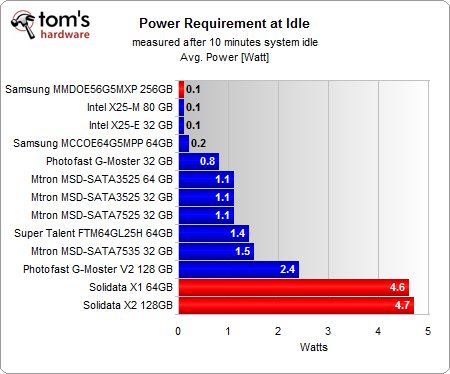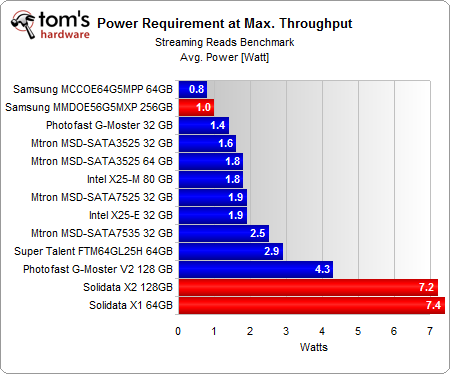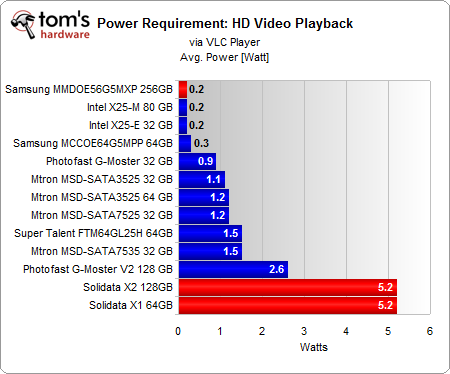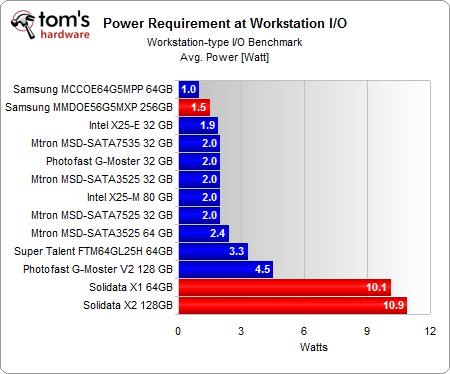Hot or Not? New Samsung and Solidata SSDs
Power Consumption

We’d expect all flash SSDs to stay below 1 W idle power. In fact, the Intel and Samsung drives switch into low power idle modes, initiated by the devices or the host system, and reduce idle power to 0.2 W or less. These are great results, especially for notebooks or mobile workstations.
Solidata, however, shocked us with inopportune idle power consumption, which is 20 times higher than the results of the Intel and Samsung drives. Even high-performance SLC-based flash SSDs by Mtron require less than a quarter of the Solidata drives’ idle power consumption. I guess there is still a lot of room for improvement here.

If you want maximum sequential throughput, the power consumption of most SSDs increases to anything between 0.8 W and 2 W, which is excellent—mechanical hard drives require at least 50% more power. Solidata again is way behind at 7 W, which clearly disqualifies the drive for notebook applications. It’s amazing to see Samsung’s power consumption at maximum throughput: 1.0 W is a new record.

Playing HD video off the SSDs means limiting the data stream to a lower bit rate. In this case, the Intel and Samsung SSDs are very efficient, at 0.2 to 0.3 W, while the other SSDs mostly need between 1 W and 2 W. In contrast, Solidata requires 5.2 W. In their defense, though, I want to point out that this is close to the idle power level of 4.9 W so this represents a power increase of approximately 0.3 W. Clearly, the base power requirement is the issue.

Most drives hit their peak power requirements if you request lots of random I/O operations. Solidata jumps to as much as 10.9 W in the case of the X2-128, while the new Samsung 256 GB SSD stays at 1.5 W and hence requires 25% less power than the Intel X25 SSDs. This promises to be an exciting shootout, as we now look at performance per watt.
Stay On the Cutting Edge: Get the Tom's Hardware Newsletter
Get Tom's Hardware's best news and in-depth reviews, straight to your inbox.
Current page: Power Consumption
Prev Page PCMark Vantage Application Performance Next Page Efficiency: Performance Per Watt